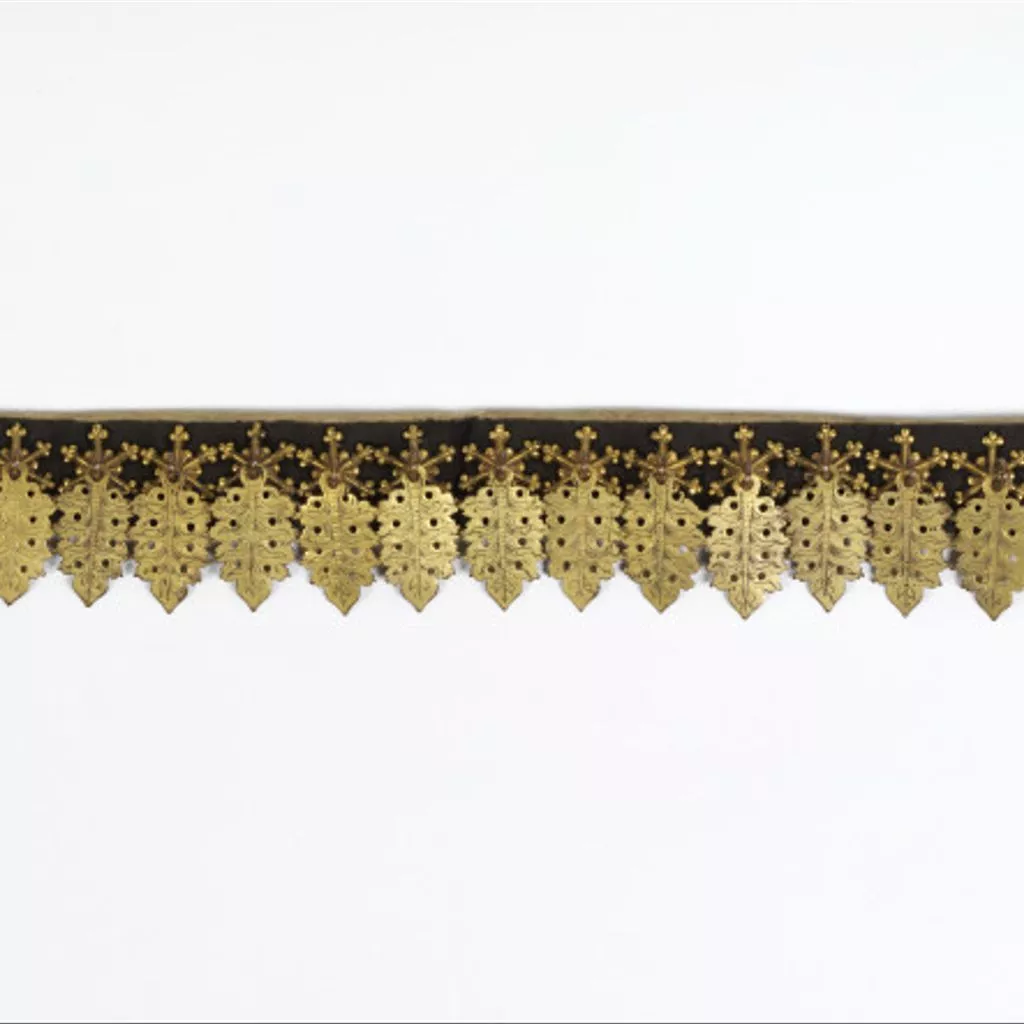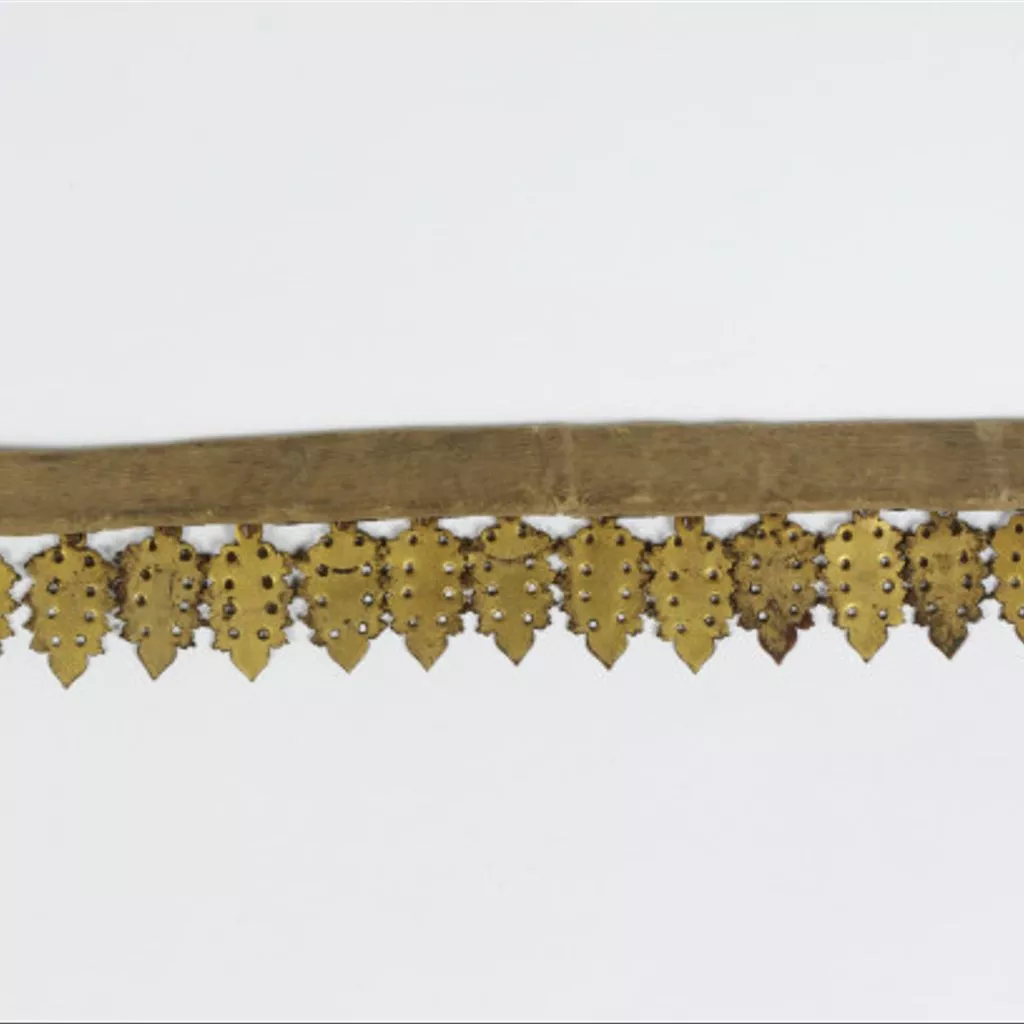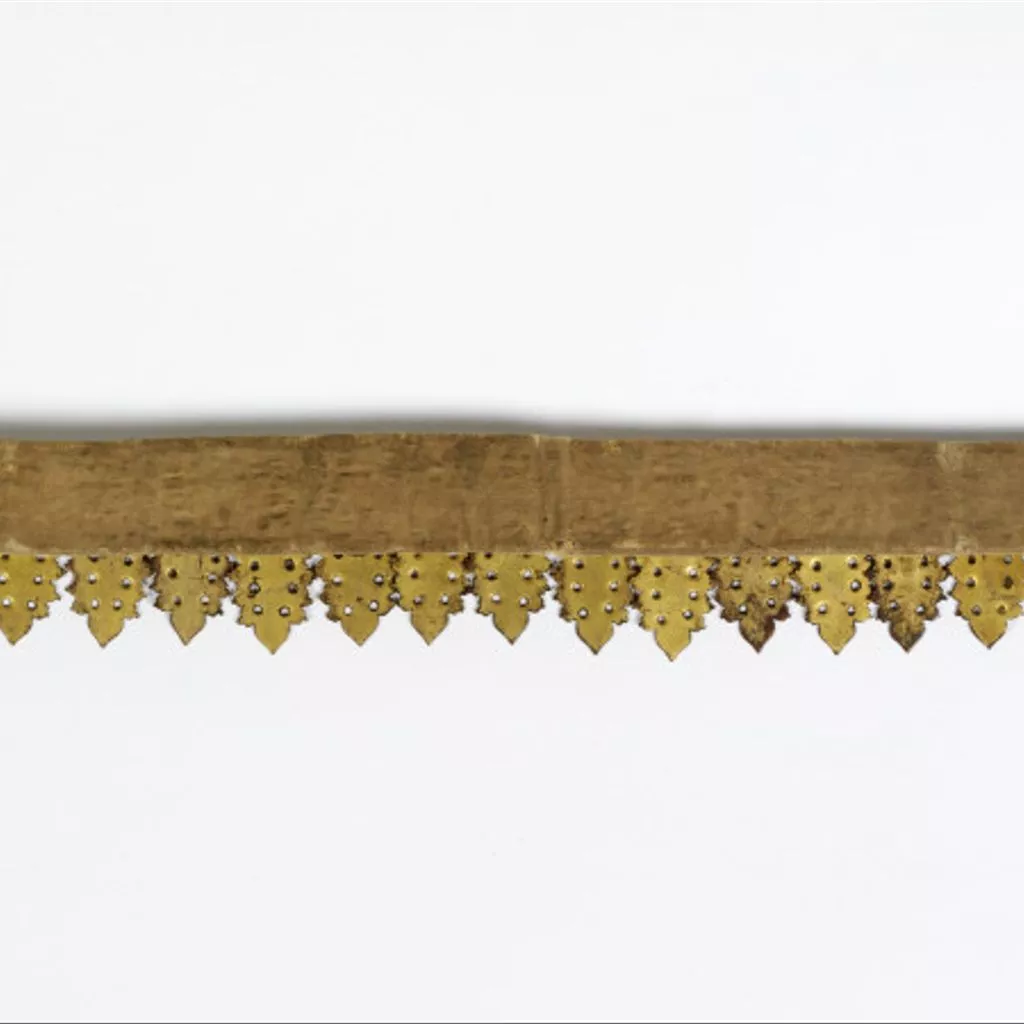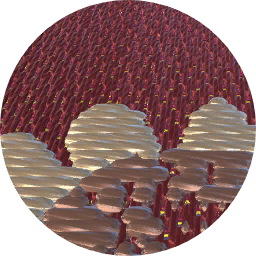Description
This object is a bridal headband from the Egerland, a German-speaking area in the north-east part of the Czech Republic. The pendant leaves were deliberately hung loosely from their mounts, so that they flickered when worn, reflecting the light and making a noise like bells. This was intended to deflect any potential evil from the bride, and demonstrates the survival of a belief dating back to medieval times.
It was given to the museum in 1908, together with some other Dalmatian traditional jewellery, by Aymer Vallance, a leading member of the Oxford Movement in the 19th century, and a supporter of William Morris’ Arts and Crafts. It was originally described as a Norwegian belt, probably due to the numerous leaf-shaped pendants.
Band made from a strip of stiff material, covered on the front with black (now faded to a dark brown) velvet, and on the back with cream (formerly red). There are 17 gilt metal appliqués sewn along the front of the band, each with six rounded points, like a snowflake, and with a large hook sticking out at right angles in the centre. Each hook supports a gilt metal leaf-shaped pendant. Two rosettes are sewn, side by side, to each end, each with a large loop at the outer side for fastening.
Stiff head band with gilt metal appliqués and leaf-shaped pendants (Glockenbendel), Egerland (Czech Republic), 18th century. The headband made of stiff material covered with plain woven linen or silk (originally red, now cream) to which a silk velvet ribbon (once black, now brown) has been applied.








